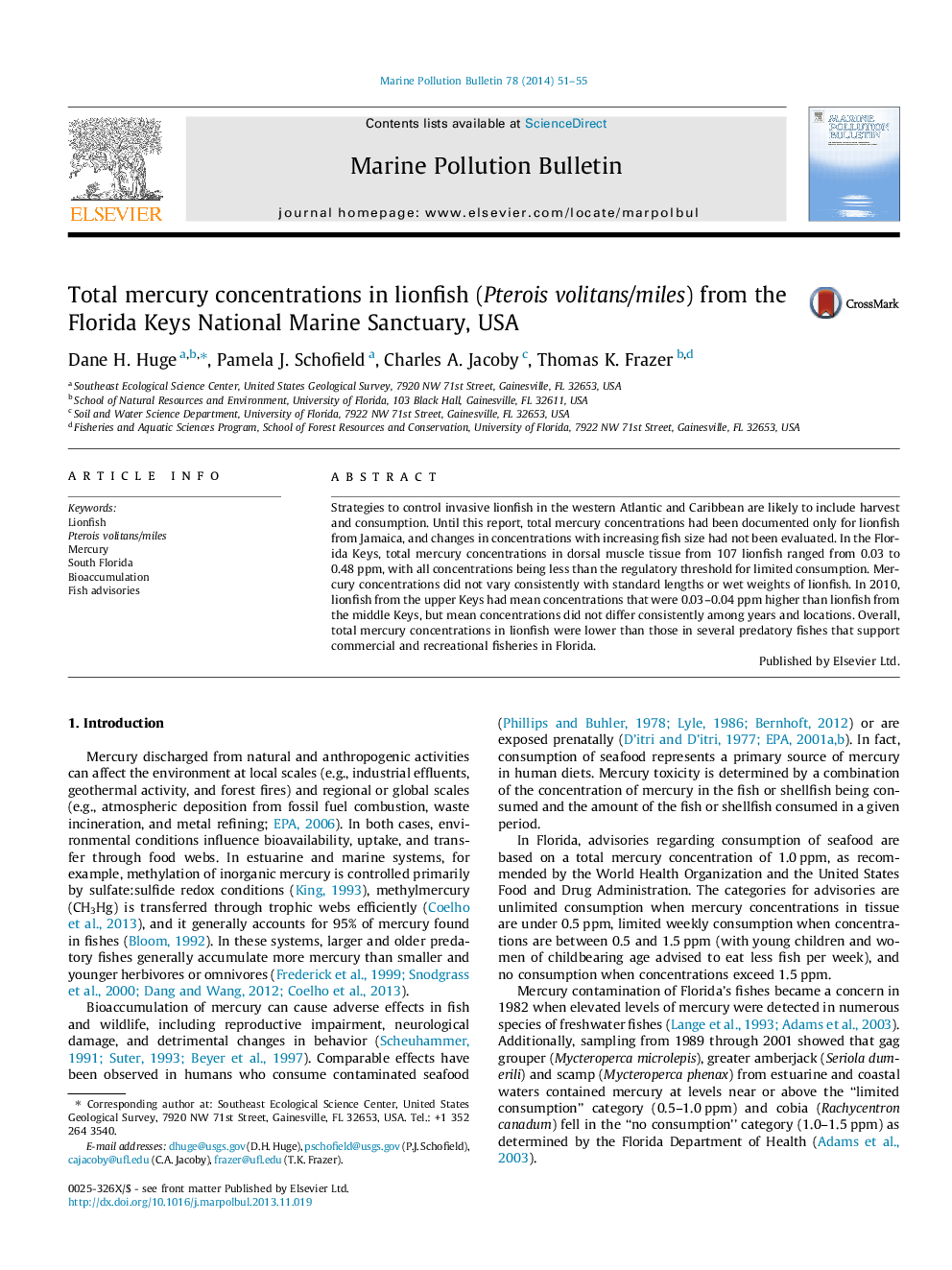| Article ID | Journal | Published Year | Pages | File Type |
|---|---|---|---|---|
| 6359201 | Marine Pollution Bulletin | 2014 | 5 Pages |
â¢Mercury concentrations in muscle from 107 lionfish were below consumption guidelines.â¢No significant relationship between mercury concentrations and the size of lionfish.â¢No significant difference in concentrations from 2 sampling events in 3 locations.
Strategies to control invasive lionfish in the western Atlantic and Caribbean are likely to include harvest and consumption. Until this report, total mercury concentrations had been documented only for lionfish from Jamaica, and changes in concentrations with increasing fish size had not been evaluated. In the Florida Keys, total mercury concentrations in dorsal muscle tissue from 107 lionfish ranged from 0.03 to 0.48Â ppm, with all concentrations being less than the regulatory threshold for limited consumption. Mercury concentrations did not vary consistently with standard lengths or wet weights of lionfish. In 2010, lionfish from the upper Keys had mean concentrations that were 0.03-0.04Â ppm higher than lionfish from the middle Keys, but mean concentrations did not differ consistently among years and locations. Overall, total mercury concentrations in lionfish were lower than those in several predatory fishes that support commercial and recreational fisheries in Florida.
